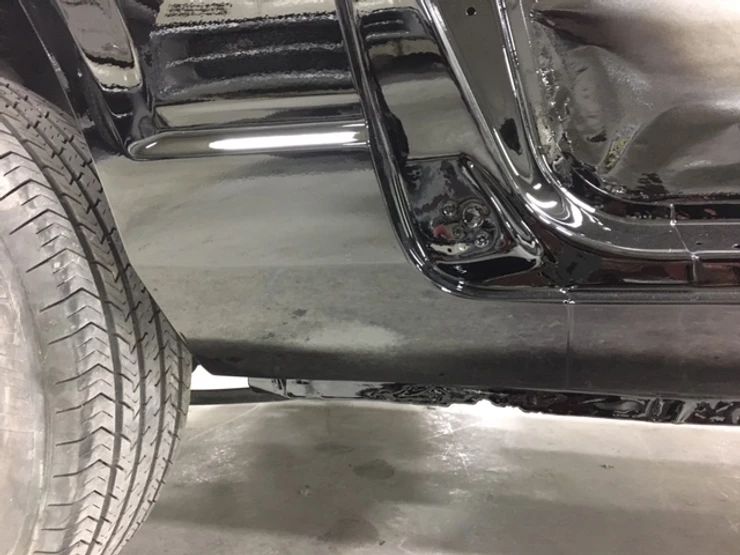
Nov
Rust can be a real car killer, if you’re not careful and you let it go too far, say hello to the scrapheap. Creeping it’s way into every possible nook n’ cranny of a cars bodywork, any area of water accumulation will begin to eat away at the metal and you’re destined to be dealing with a disaster over time.
Rust repair can be the bane of most auto restorers, but will make all the difference in the final product when done correctly. It’s mind boggling that some people think that entire sheets of metal can be replaced by white, gummy filler, but you’ll be surprised how many ‘restorers’ will take this easy route. Plugging rusty holes with filler is a quick fix but in the long run, the filler will either soak up water that would otherwise run off the car, feeding it back into the bodywork, or it will not provide any significant form of protection and will let water and moisture seep through from the surroundings into places you really don’t want it to be. Trust us, just don’t do it! If you’re going to take the time to address the issue, do it right.
Here is a photo set following all the stages of a proper rust repair on a 1979 Nissan Datsun 280ZX rear passenger panel.
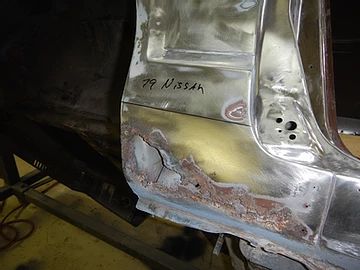
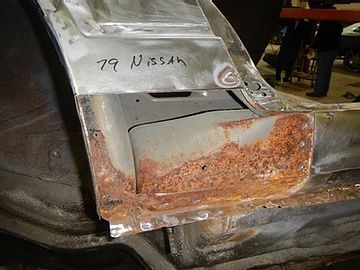
There are plenty of manufacturers that offer reproduction replacement panels for common models, but often they are never going to be the standard of the original body panels and are often damaged in transit upon arrival. It’s also a frequent occurrence that you’ll go to line up the outer panel ready to weld it on and it will seem like it doesn’t fit at all. Keep in mind there are often inner structural panels that will reveal themselves once the corroded and rusted outer is removed.
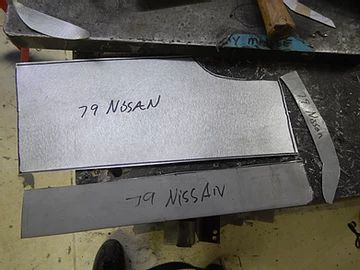
For this 79 Datsun 280zx we custom cut patches to weld in. Of course keep in mind that all surface rust and corrosion must be removed, as only clean, bare metal can be used for efficient welding to take place.
Inner panels for structural integrity also had to be replaced and welded in
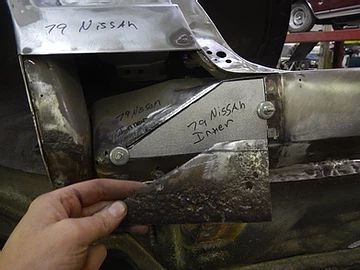
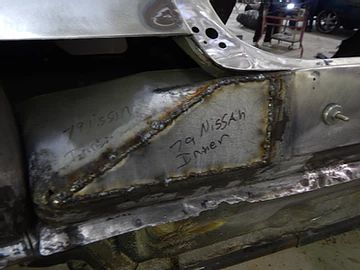
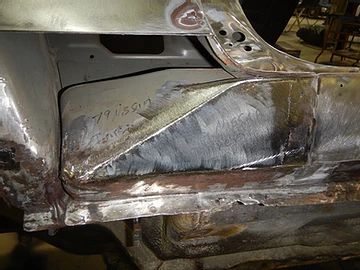
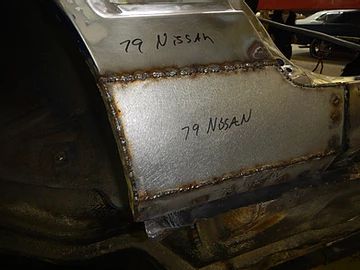
Angle grinder is next to clean up and smooth the welds
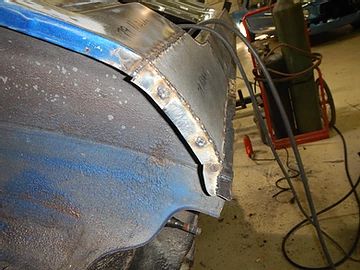
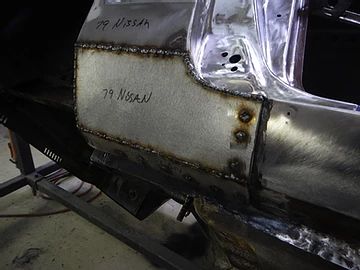
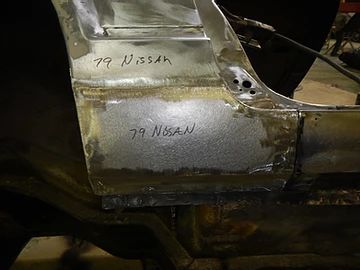
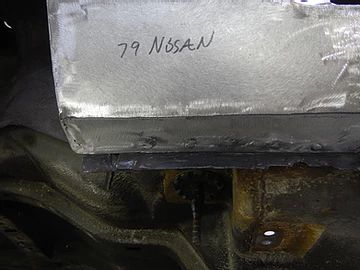
Smooth and clean to keep the body lines as original.
Good quality work leaves you with a beautiful finish, worth all the time and effort and will last for years to come.

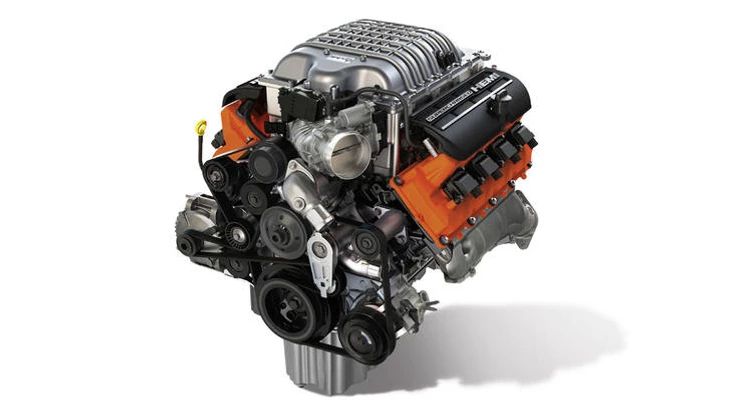
Nov
The ultimate upgrade for your classic is now available, right out of the box! Forget foraging through junkyards searching for that salvageable Challenger or Charger, the demand has finally lead Fiat Chrysler’s Mopar division to release the 6.2 liter supercharged crate engine kit deemed “Hellcrate”. Because everyone should have 707-horsepower under the hood.
Mopar is unveiling this beast in a box this week at the Annual SEMA show in Las Vegas with it’s price tag listed at $19,530. Also offered is a “plug and play” kit for $2,195 which Mopar describes in their recent press release:
“The kit includes a powertrain control module (PCM), power distribution center, engine wiring harness, chassis harness, accelerator pedal, ground jumper, oxygen sensors, charge air temperature sensors and fuel pump control module, for the 6.2-liter supercharged Crate HEMI Engine. The PCM is unlocked and set to the factory 707-horsepower calibration.”
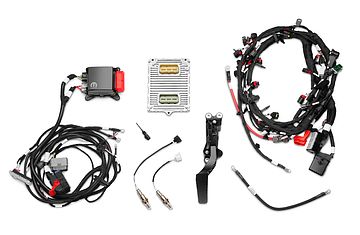
Mopar says its engineers optimized the Hellcrate HEMI Engine Kit for use with manual transmissions, and that the engine also requires a Front End Accessory Drive Kit, which includes things like a power steering pump, belts, an alternator, pulleys and more. The brand does not mention pricing for the FEAD kit quite yet.
This is the second most powerful American motor ever made, after the DEMON version, but it is the “first-ever supercharged, 707-horspower factory-backed crate engine kit” to be offered. Unfortunately, the Hellcrate is only certified for use in pre-1976 vehicles due to emissions certifications, but definitely tons of options for all you classic speed junkies.
For more information go to Moparhellcrate.com
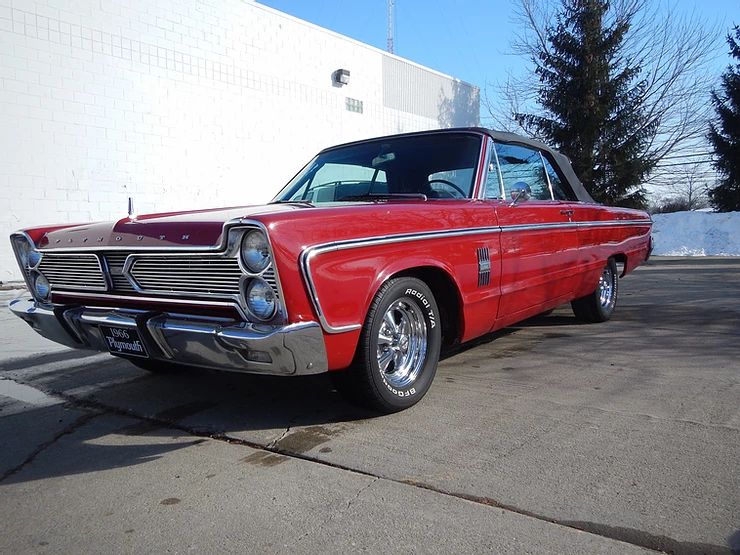
Oct
Buying a classic car might be one of the most exciting purchases you’ll ever make, so it pays to do to your homework. Antique and vintage cars can be costly to purchase, restore, and maintain.
Whether you’re looking for a project car to work on yourself or a fully restored show car, you’ll want to make a smart, informed decision.
Deciding what to buy
There are numerous options when buying a classic car, but before getting out the checkbook, it’s good to think about what’s right for you.
-
Be careful about the investment. Making money on classic cars can be very difficult. Buying something simply because you think it’s a good investment can be risky as the collectible car market is very volatile. Experienced dealers will tell you that a collectible car is only worth as much as someone will pay for it; the ‘book value’ isn’t a guarantee. If this car will be for fun, focus in on cars that you would be proud to own and drive for years to come.
-
Decide how it will be used. Think carefully about what you want to do with the car. Will it be driven daily or just on weekends? Would you like to show it? Will it sit in your garage under a tarp and rarely get used?
-
Establish an affordable budget. Carefully figure out what you want to spend and stick to it. Keep in mind that restoration projects can be very, very expensive. If you buy a fixer-upper, you may quickly exceed your budget on parts and labor. A bargain car may end up costing you more than a pricier, but cleaner version.
-
Do your research. Be sure to check the average retail value to get a baseline price. Read any information you can find and check auto auctions and price guides to help determine what the fair market value is for your car. Be extra cautious when buying a car on the Web. eBay has good tips on purchasing a classic car online .
-
Check mileage. As with most used cars, the fewer miles on the speedometer, the more the car is probably worth. Don’t be afraid to purchase a high-mileage car; just be sure it is reflected in the price.
Inspecting the car
Careful inspection is very important when buying a classic car. You may want to use an inspection service. Or if you want to do it yourself, here are a few things to consider:
- Clear title: Check if the car is registered to the seller or not registered at all. Fees and penalties can really add up if you need to research and apply for a title.
- VIN: Make sure the VIN (Vehicle Identification Number) on the title matches the official VIN tag on the car. If they do not match, it’s possible it may have been in a serious accident or be a counterfeit or stolen.
- Interior: Original is best. Check if the seats, upholstery, badges, radio, dashboard, and emblems are damaged or not factory original. Finding and replacing these can really add up.
- Exterior: Try to examine the car in natural daylight. Look for the condition of the paint, obvious dents, and panels that are misaligned or mismatched. Major welding marks can be a sign of a clip job — attaching the front or back half of a junked car to a vehicle after it has sustained severe damage.
- Rust damage: A little can be expected, but if complete sections of floorboards or body panels are rusted or show signs of repair or replacement, you should be very cautious. If a professional did not do the repairs correctly, there’s a good chance the rust could return.
- Test drive: If the car is running and safe and legal to drive, take it out for a spin. It’s a good opportunity to check for any serious problems. Listen for anything out of the ordinary, such as noises, squeaks, and clunks. If it feels loose going around corners or over bumps, there may be costly suspension problems.
Maintenance and Care
Finally, your childhood dream car is sitting in your garage and is officially yours. Time to show it off to the world, right? Well, not exactly. After picking up a classic car, it tends to need a little bit of care for the present and consistent care for the future.
To lend a hand, here are five easy classic car tips:
- Before you take it out, taking it in for a good, strong, handwash is a must. But that’s not the only time to take it for a wash. To maintain the perfect look, washing it and keeping it as clean as possible will keep salt, grime and other impurities from becoming permanent throughout the exterior.
- After handwashing your classic ride, it’s time to really give it a shine to show off that custom paint job. And waxing is the best way to really make the paint pop. Done about once every six months should do the trick as well as chrome polish on the chrome trim throughout.
- Wash and wax has the exterior shining but that’s only half of the battle. When riding around town, showing off the interior to friends, on-lookers and passangers is just as important. That’s why protecting the leather and vinyl from sun damage and stains is vital. Simple leather creams, vinyl cleaners and UV blockers can help here.
- Having a good looking car is good for anyone looking at it while it’s parked but the ride and engine is what really turns heads. With regular oil changes and other fluid changes, your engine should remain in peak condition.
- Pulling up to a stop light with a beautiful ride and a loud engine can garner some attention.But once the breaks squeal, it may receive more laughs than oohs and ahhs. That’s why it’s important to maintain the breaks and pump them whenever possible to keep them as smooth as possible.
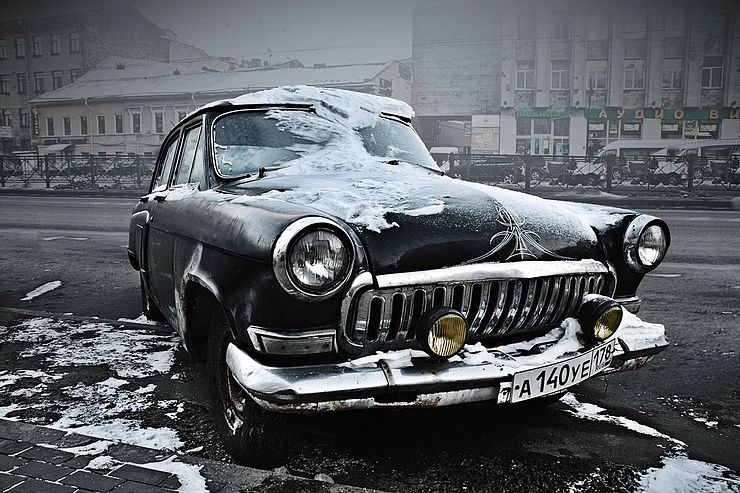
Oct
Before the first flakes begin to fall, it’s a good habit to prepare to winterize your classic auto to ensure proper storage for the lengthy winter season. Here is a detailed step by step guide from our friend’s at Hagerty Insurance.
Before Storage
-
Select a dry, dark location for storage — preferably with limited access. Concrete flooring is best at keeping away moisture. If you must store your car on a dirt floor, place a plastic barrier under the vehicle, and place carpet pieces or plywood under the tires.
-
Give the vehicle a good wash/wax. Putting on and removing a vehicle cover will lead to unwanted scratches if the car is dirty.
-
Fill the fuel tank (preferably with premium) and add fuel stabilizer. Be sure to run the vehicle to move fuel stabilizer into the carburetor, fuel rails, injectors, etc. The fuller the tank, the less room there will be for air, which carries moisture that can lead to fuel contamination and possibly rust within the tank.
-
Change the oil and filter right before putting away the vehicle. The clean oil will reduce the risk of harmful contaminants working away at your engine during hibernation — and you’ll be ready to go in spring.
-
Check the antifreeze.
-
Add air to the tires.
-
If you’re storing your car offsite, some insurance companies require you to report the address of the offsite location. Check with your insurer to determine your policy’s requirements.
When Storing
-
Place baking soda refrigerator packages in the interior and trunk areas.
-
To keep insects and vermin out of the car, put a plastic bag over the air cleaner/air inlet and exhaust pipe(s). You also can cover these with aluminum foil and tape securely. Place mothballs in the tailpipe and around the outside of the car, or insert steel wool in the tailpipe.
-
Place the vehicle on jack stands. This step avoids tire flat spots and adds longevity to the suspension because it is not supporting the vehicle’s weight during storage.
-
For your battery, take one of the following actions: Unhook the battery by removing the negative cable first and store it separately — never on a concrete floor and preferably where it will not freeze; or leave the battery in the car and put a battery tender on it, if there is power available. That way if you want to start it a few times in the winter you don’t have to put the battery in and out.
-
Close all of the windows.
-
If the vehicle will be exposed to freezing temperatures, be certain no personal items that may freeze or burst are left in the vehicle.
-
There are varying theories about periodically starting the vehicle. This writer feels unless you get the engine up to operating temperature for a good 10-plus minutes to burn off the water vapors that initially develop at startup-cold operation, starting is not a good idea. Anything less will leave water in the combustion chamber and all exhaust components.
Bringing Your Baby Back to Life
-
Charge the battery for a solid 24 hours. When returning the battery to the vehicle, attach the positive cable first.
-
Once your car is uncovered, inspect it for any signs of insect or vermin damage.
-
Remove the baking soda units. If you forget them, they may spill during driving.
-
It’s a good idea to check for floor leaks, check all fluid levels, and check the tire pressures.
-
Remove plastic bag (aluminum foil) from over air cleaner/air inlet and exhaust pipe(s).
-
Apply the brakes ensure they work and that you have a good pedal. The steel brake lines can rust out and leak, and vermin can chew through the rubber brake hoses.
-
Start the vehicle and check for any fluid leaks.
-
Give it some extra time to warm up, and check the lights, horn, etc., while the temperature begins to rise. Drive it slowly for a mile or so. Some components such as transmissions and rear-ends require movement for full/proper lubrication.
-
After driving a bit, check it again for leaks, etc.
-
Your car cover may have become dusty over the long winter months — give it a good cleaning according to the manufacturer’s instructions.
-
Lastly, but most importantly, do a burnout for me!
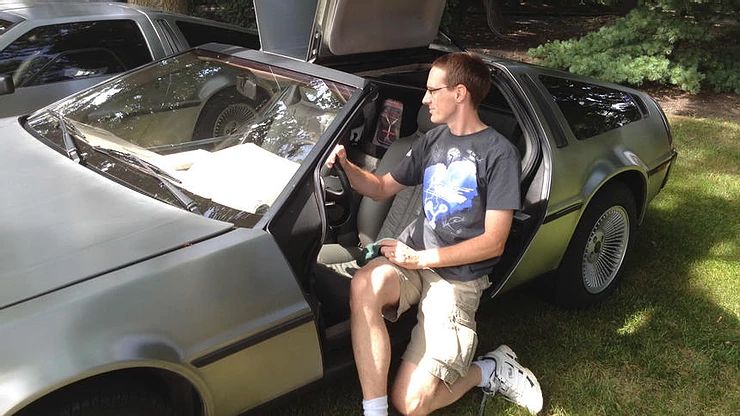
Sep
Millennials Collect Cars With New Classics Like Datsuns and DeLoreans
DETROIT—Millennials are getting into car collecting, and they’re changing the hobby and the idea of what vehicles are worth owning and preserving.
This year, for the first time, millennials are responsible for more collectible car activity than the pre-baby-boom generation, according to Hagerty Insurance, the largest insurer of collectible cars. Roughly speaking, millennials are the generation born between 1977 and 1995.
Contrary to popular belief, millennials drive and enjoy cars, Hagerty Insurance CEO McKee Hagerty says, but the vehicles that fire their imagination are more likely to be pickups, SUVs and performance cars from late 1960s to early ’90s than the 1950s sedans, hot rods and early muscle cars prized by previous generations.
Get ready to see more Cutlass Supremes, Land Rover Defenders, Mazda RX-7s, Ford F-series pickups, Datsun 260Zs, Chevy Monte Carlos, BMW M3s and VW Corrados at classic car gatherings.
It’s a progression that happens as every generation reaches the point where they have the time and money to collect and restore cars. A classic car is generally considered one that’s at least 25 years old, so a new set arrives every year, along with a generation who grew up admiring them. My ’69 Pontiac GTO Judge could be my niece’s ’89 Nissan Skyline GT-R. 1960s American muscle cars were a dime a dozen 20 years ago. They became collectible classics when baby boomers and Gen Xers hit their peak earning years and sought out the cars they admired as kids.
It’s happening again, to a different set of cars. “Cars nobody thought twice about 10 years ago are generating great interest at auctions and museums,” said Matt Anderson, transportation curator at the Henry Ford Museum in Dearborn. “People like to collect cars that were popular when they were kids or in high school; 1980s Firebirds, especially Trans Ams, are having a resurgence.
“A lot of it is driven by popular culture, too. There’s no reason the DeLorean should be collectible, but the ‘Back to the Future’ movies gave it an incredible second life. I have a theory that just like every ’69 Dodge Charger was converted into a General Lee ‘Dukes of Hazzard’ car, every existing DeLorean will eventually be converted into a time machine.” The current classics won’t disappear, but they’ll be less numerous when collectors gather. Just as there will always be Model T devotees, the 1955 Chrysler 300-C, the ’59 Cadillac Eldorado and company will always have fans.
Millennials are more interested in going places than working on their classics, McKeel Hagerty said. That’s bad news for old British cars, which are “noticeably absent” from the list of cars getting millennials’ attention. “They were legendarily demanding,” he said. “Millennials are not looking at them at the same level as earlier groups. They buy vehicles that are fun.
“There’s an ever-increasing interest in SUVs—early 4x4s, like the Land Rover Defender, early Jeeps, the Ford Bronco and International Scout.”
While cars built through the 1970s are relatively simple machines, collecting vehicles from the 1980s will present new challenges. The Buick Riviera was way ahead of its time, offering a touch screen a decade before other brands, but pity the fool who tries to find replacement parts for its cathode ray tube.
“Older, unique SUVs and vans are gaining some attention from millennials,” Kelley Blue Book editorial director and executive market analyst Jack Nerad said. “Old Minis and mid-70s Japanese pickups also get some love. Then there are the big, American boats from the ’70s and ’80s era: Cadillacs, Buicks and Lincolns. For (millennials), it’s not the classic muscle cars and definitely not flathead roadsters. They’re heading in new directions.” Despite that, some vehicles draw plenty of interest from millennials and earlier generations of collectors, according to Hagerty’s data. Nearly every generation of Ford Mustang is on the hot list, along with Chevy Camaros, Corvettes and pickups. Icons like the 1955-57 Chevy Bel Air and the 1949-80 VW Beetle get plenty of love from car fans of all ages.
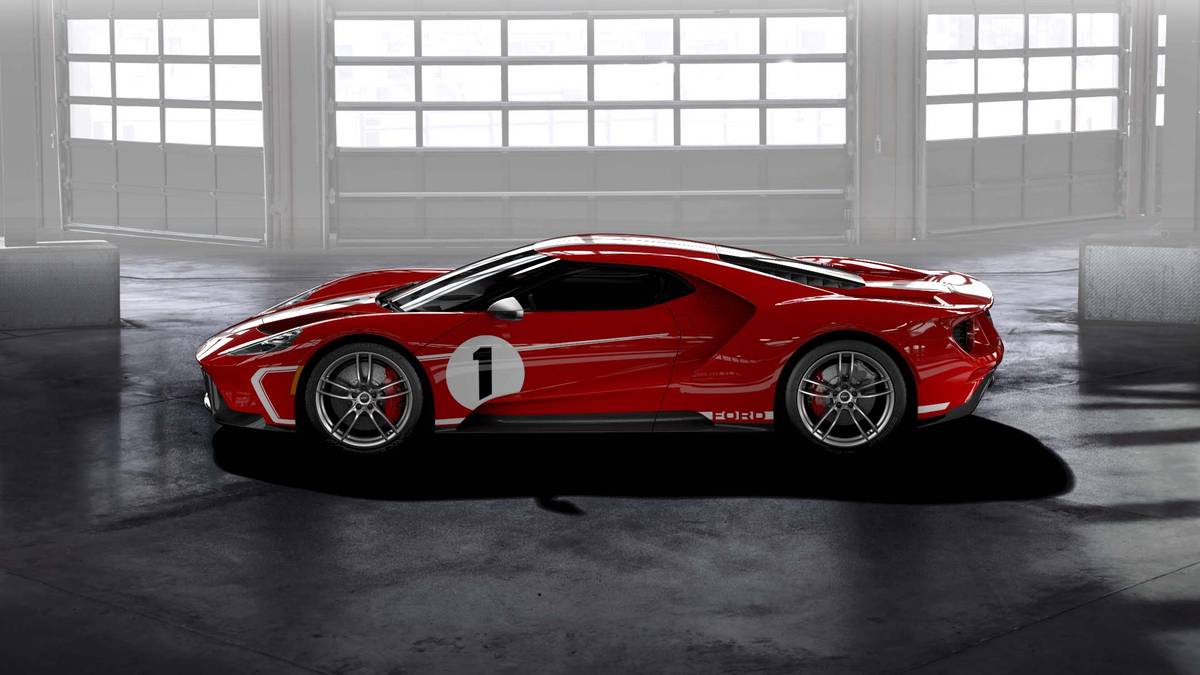
Aug
The new Ford GT will show up at Pebble Beach/Monterey Car Week in 1967 heritage livery, celebrating 50 years since Dan Gurney and A.J. Foyt won the 24 Hours of Le Mans. The GT Heritage ‘67 will come in red with white stripes featuring a race number sticker and special interior colors and materials.“In creating a worthy successor to the 2017 Heritage edition, we logically looked at our next historic Le Mans victory with the all-American team of Dan Gurney and A.J. Foyt,” said Dave Pericak, global director Ford Performance.
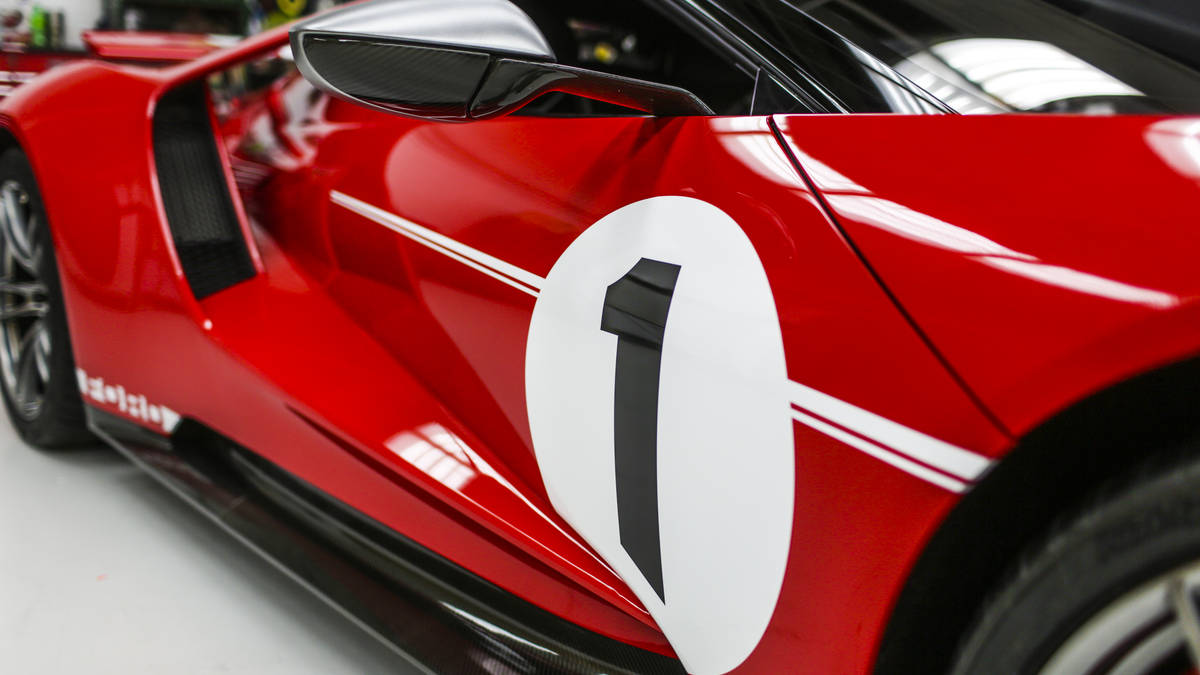
“The 2018 Ford GT ‘67 Heritage edition pays homage to that win, with a modern take on one of the most important vehicles in Ford’s storied history of racing.”DRIVE REVIEWS Gallery: Ford GT driveThe Pebble Beach display car will sport number “1” on its gumball, plus 20-inch aluminum wheels with black lug nuts, red calipers and silver mirrors.Inside the GT gets unique leather trim with red accent stitching, red seat belt webbing and anodized gray paddle shifters. Finally, all Heritage editions will come with a serial number plate, matte carbon-fiber door sills, air register pods and center console.The limited edition will be labeled a 2018 model. There’s no pricing info yet, nor a number on just how limited this limited edition will be. If you have the cash, call Ford now.
